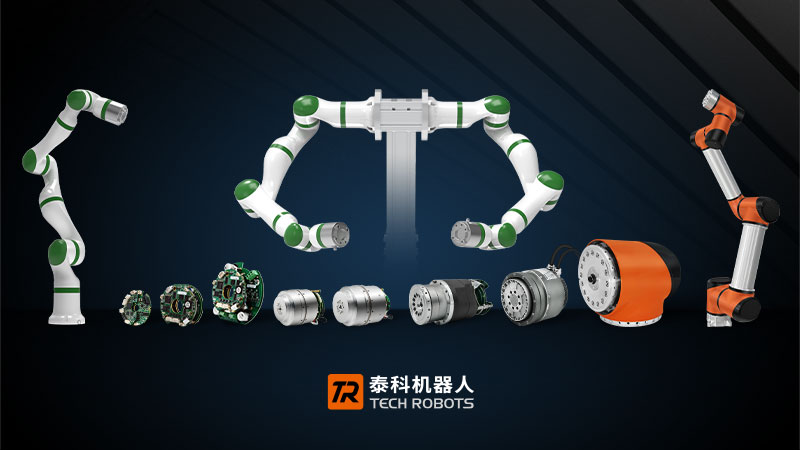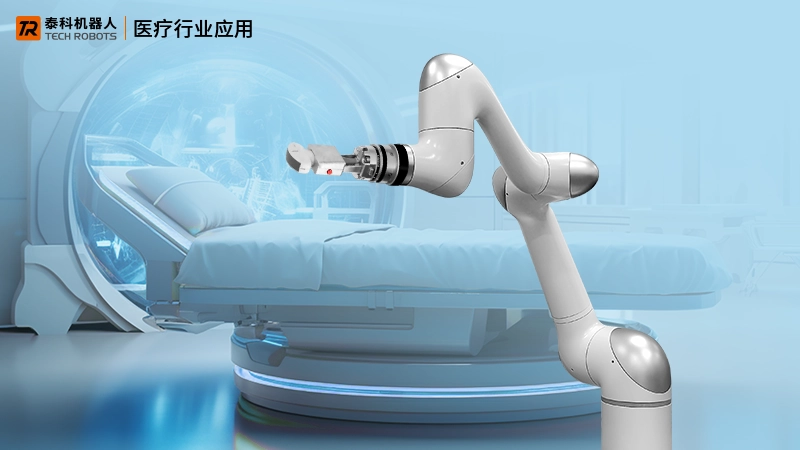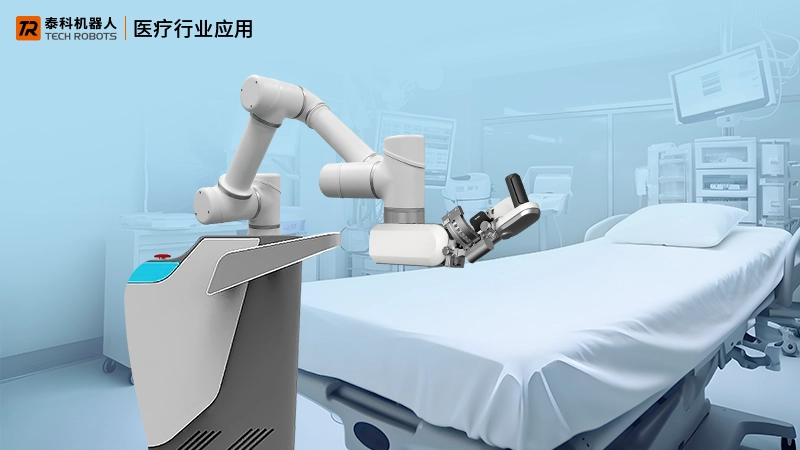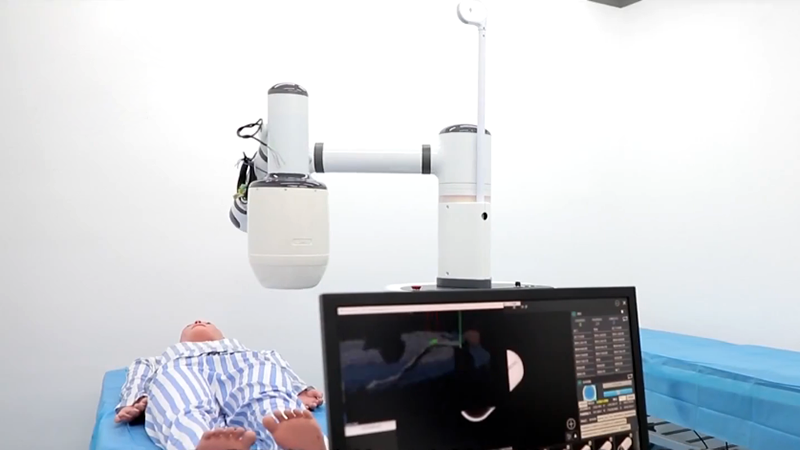Promising Future! Tech Robots’ Cobots Fully Expand into the Medical and Healthcare Industry
Date:2023-12-15
According to data up to May 2021, the population aged 60 and above in China has already accounted for 18% of the total population, significantly exceeding the international standard for aging, which is 10%. Additionally, the birth rate has been declining in recent years, further accelerating the aging trend in China. This has brought about many challenges, including the explosive growth in demand for elderly care, medical treatment, healthcare rehabilitation, health monitoring, and more. Collaborative robots, with their excellent safety, reliability, and user-friendliness, are gradually entering hospitals, medical examinations, elderly care, rehabilitation institutions, becoming indispensable partners in addressing these needs.

As a professional collaborative robot brand, Tech Robots has provided mature collaborative robot products to more than 500 customers. With features such as high precision, high reliability, and flexible deployment, these robots are widely used in the medical, rehabilitation, and inspection fields. Here's an overview of their applications:
Surgical Assistance:
Collaborative robots assist doctors in surgical operations by tasks such as passing surgical instruments and exposing the surgical field. With precise robotic operations, surgical errors can be reduced, improving efficiency and safety. The integration of 5G technology enables remote medical procedures, addressing issues like the shortage of highly skilled local physicians and ensuring the timeliness of surgeries.
Rehabilitation Training:
Collaborative robots are used for patients' rehabilitation training, assisting with limb movements and balance exercises. Intelligent control and adaptive adjustments enable personalized rehabilitation training programs, accelerating the recovery process. Especially for the prevalent issues among the elderly, such as strokes, timely and professional rehabilitation training assisted by collaborative robots can effectively restore physical functions.
Nursing Assistance:
Collaborative robots assist nurses in daily nursing tasks, including monitoring patients' vital signs, administering medication, and changing bed sheets. Automation of these tasks reduces the workload on nurses, enhancing nursing efficiency and quality.
Medication Management:
Collaborative robots are employed for medication management, such as automated dispensing and drug distribution. Precise robotic operations help avoid risks like medication errors, ensuring patient safety.
Telemedicine:
Collaborative robots contribute to remote medical services, facilitating remote surgeries and consultations. Through remote control and real-time transmission, doctors can collaborate and communicate from different locations, improving the utilization efficiency and service scope of medical resources.
Health Monitoring:
Collaborative robots are utilized for health monitoring, including regular check-ups and disease screenings. Intelligent analysis and data processing enable accurate assessment and prediction of an individual's health status, allowing timely detection and prevention of potential health risks.
In summary, collaborative robots have broad prospects in the field of medical and healthcare, providing more efficient, safe, and convenient medical services for doctors, nurses, and patients.
Specifically, Taike Robotics' TB6 six-axis, TC7 seven-axis, DR dual-arm series robots have been applied in the mentioned scenarios, including surgical assistive robots, ultrasound medical inspection robots, capsule endoscopy robots, stroke and postoperative rehabilitation robots, etc. The feedback from customers has been very satisfactory, and ongoing collaborations and new orders are in progress.
In conclusion, the demand in areas like healthcare and rehabilitation is expected to experience explosive growth. Taike Robotics will continue to collaborate with partners to transform technological advantages into advanced products, serving the public.

As a professional collaborative robot brand, Tech Robots has provided mature collaborative robot products to more than 500 customers. With features such as high precision, high reliability, and flexible deployment, these robots are widely used in the medical, rehabilitation, and inspection fields. Here's an overview of their applications:
Surgical Assistance:
Collaborative robots assist doctors in surgical operations by tasks such as passing surgical instruments and exposing the surgical field. With precise robotic operations, surgical errors can be reduced, improving efficiency and safety. The integration of 5G technology enables remote medical procedures, addressing issues like the shortage of highly skilled local physicians and ensuring the timeliness of surgeries.
Rehabilitation Training:
Collaborative robots are used for patients' rehabilitation training, assisting with limb movements and balance exercises. Intelligent control and adaptive adjustments enable personalized rehabilitation training programs, accelerating the recovery process. Especially for the prevalent issues among the elderly, such as strokes, timely and professional rehabilitation training assisted by collaborative robots can effectively restore physical functions.
Nursing Assistance:
Collaborative robots assist nurses in daily nursing tasks, including monitoring patients' vital signs, administering medication, and changing bed sheets. Automation of these tasks reduces the workload on nurses, enhancing nursing efficiency and quality.
Medication Management:
Collaborative robots are employed for medication management, such as automated dispensing and drug distribution. Precise robotic operations help avoid risks like medication errors, ensuring patient safety.
Telemedicine:
Collaborative robots contribute to remote medical services, facilitating remote surgeries and consultations. Through remote control and real-time transmission, doctors can collaborate and communicate from different locations, improving the utilization efficiency and service scope of medical resources.
Health Monitoring:
Collaborative robots are utilized for health monitoring, including regular check-ups and disease screenings. Intelligent analysis and data processing enable accurate assessment and prediction of an individual's health status, allowing timely detection and prevention of potential health risks.
In summary, collaborative robots have broad prospects in the field of medical and healthcare, providing more efficient, safe, and convenient medical services for doctors, nurses, and patients.
Specifically, Taike Robotics' TB6 six-axis, TC7 seven-axis, DR dual-arm series robots have been applied in the mentioned scenarios, including surgical assistive robots, ultrasound medical inspection robots, capsule endoscopy robots, stroke and postoperative rehabilitation robots, etc. The feedback from customers has been very satisfactory, and ongoing collaborations and new orders are in progress.
In conclusion, the demand in areas like healthcare and rehabilitation is expected to experience explosive growth. Taike Robotics will continue to collaborate with partners to transform technological advantages into advanced products, serving the public.


